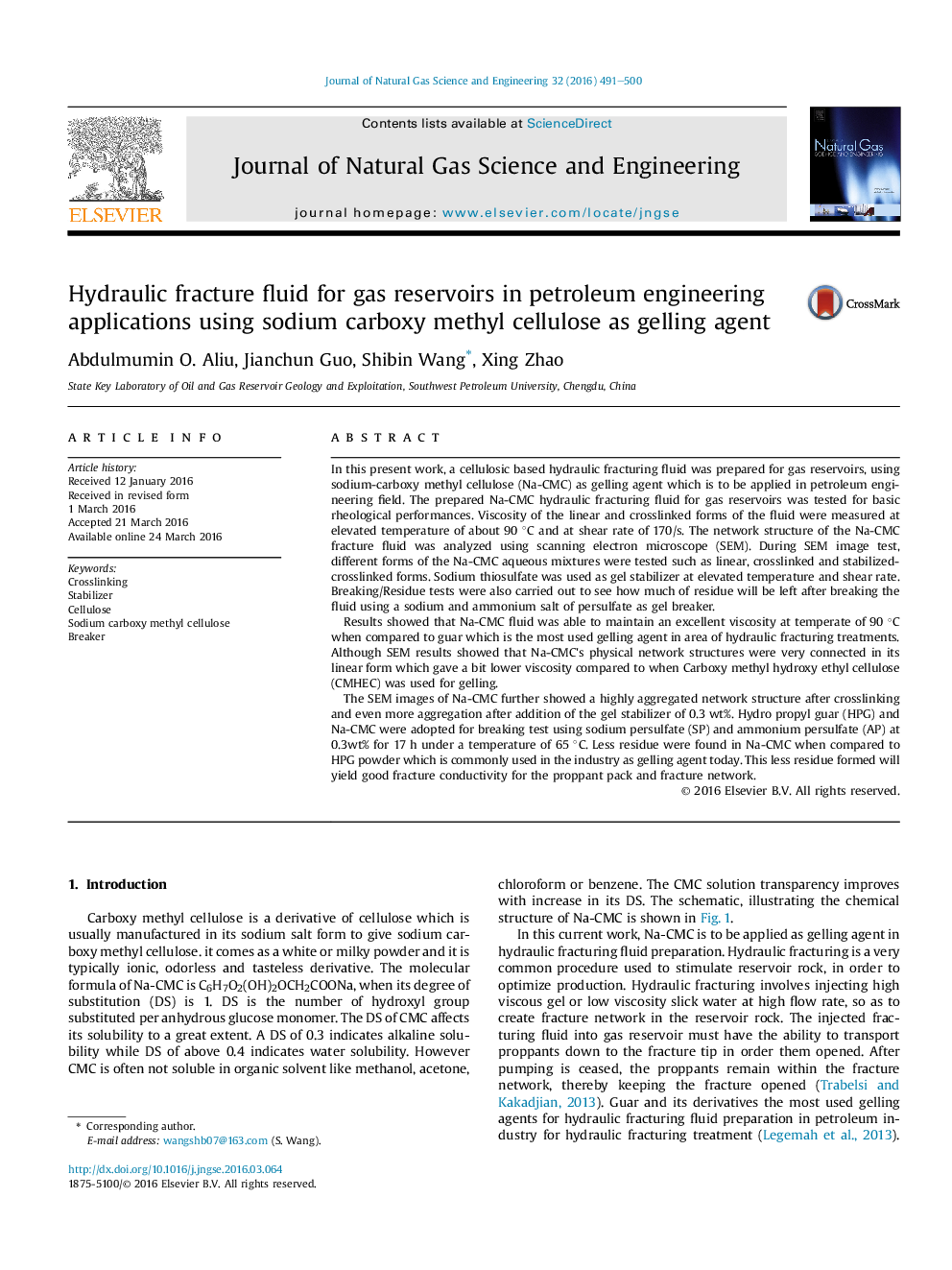| کد مقاله | کد نشریه | سال انتشار | مقاله انگلیسی | نسخه تمام متن |
|---|---|---|---|---|
| 1757249 | 1523009 | 2016 | 10 صفحه PDF | دانلود رایگان |
• An efficient gelling agent for hydraulic fracturing application is proposed using Na-CMC.
• Na-CMC maintained excellent viscosity at high temperature and pressure.
• Na-CMC gel showed very little or virtually no residue after breaking.
• Strong intermolecular forces of attraction was assumed to be the cause of Na-CMC's enhanced viscosity.
• Crosslinked Na-CMC's intermolecular network bonding appeared very strong under the SEM imaging.
In this present work, a cellulosic based hydraulic fracturing fluid was prepared for gas reservoirs, using sodium-carboxy methyl cellulose (Na-CMC) as gelling agent which is to be applied in petroleum engineering field. The prepared Na-CMC hydraulic fracturing fluid for gas reservoirs was tested for basic rheological performances. Viscosity of the linear and crosslinked forms of the fluid were measured at elevated temperature of about 90 °C and at shear rate of 170/s. The network structure of the Na-CMC fracture fluid was analyzed using scanning electron microscope (SEM). During SEM image test, different forms of the Na-CMC aqueous mixtures were tested such as linear, crosslinked and stabilized-crosslinked forms. Sodium thiosulfate was used as gel stabilizer at elevated temperature and shear rate. Breaking/Residue tests were also carried out to see how much of residue will be left after breaking the fluid using a sodium and ammonium salt of persulfate as gel breaker.Results showed that Na-CMC fluid was able to maintain an excellent viscosity at temperate of 90 °C when compared to guar which is the most used gelling agent in area of hydraulic fracturing treatments. Although SEM results showed that Na-CMC's physical network structures were very connected in its linear form which gave a bit lower viscosity compared to when Carboxy methyl hydroxy ethyl cellulose (CMHEC) was used for gelling.The SEM images of Na-CMC further showed a highly aggregated network structure after crosslinking and even more aggregation after addition of the gel stabilizer of 0.3 wt%. Hydro propyl guar (HPG) and Na-CMC were adopted for breaking test using sodium persulfate (SP) and ammonium persulfate (AP) at 0.3wt% for 17 h under a temperature of 65 °C. Less residue were found in Na-CMC when compared to HPG powder which is commonly used in the industry as gelling agent today. This less residue formed will yield good fracture conductivity for the proppant pack and fracture network.
Journal: Journal of Natural Gas Science and Engineering - Volume 32, May 2016, Pages 491–500
